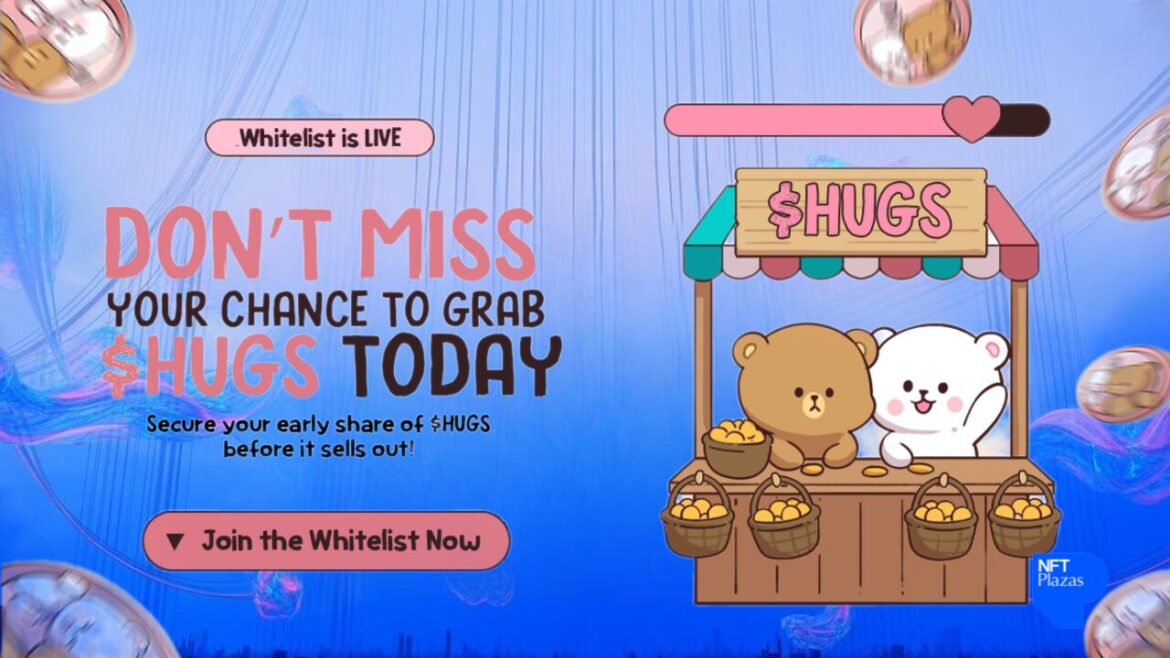Scarcity is one of the oldest forces in economics. Whether gold, art, or collectibles, human desire increases when something becomes hard to get. The Milk and Mocha ($HUGS) project transforms that rule into blockchain design. Instead of chasing hype or speculation, it builds value through a carefully engineered scarcity loop. Everything, its whitelist, presale stages, and burn mechanics, centers on making supply visibly shrink as demand rises.
The result isn’t random FOMO but structured behavior. Every limitation is intentional, teaching participants that waiting has a cost. The psychological trigger of scarcity is no accident here; it’s a deliberate feature that transforms ordinary buying pressure into a real-time experiment in market behavior.
The Economic Logic of Scarcity
In economics, scarcity drives both value and urgency. When supply is restricted, demand naturally intensifies, especially when people can see the limitation happening in real time. $HUGS takes this classic principle and turns it into a programmable event. The nearly full whitelist alone acts as a live demonstration of limited access, nudging buyers into faster decision-making.
Each presale stage adds another layer of scarcity by gradually raising the price. Investors learn that time itself is now part of the market equation, delay means paying more later. The difference between speculation and structure is that one relies on hype; the other relies on psychology. $HUGS removes randomness from human emotion, replacing it with measurable scarcity events that repeat predictably. It’s the kind of precision most tokens ignore, yet it’s what makes people act rationally in a system that looks emotional. That’s scarcity working as design, not manipulation.
The Supply Shock Burn (Presale Phase)
The presale’s supply shock burn is the first tangible lesson in economic psychology. Each week, when a presale stage ends, every unsold $HUGS token is permanently burned, erased forever. This isn’t symbolic; it’s a visible and irreversible contraction of total supply. For participants, this creates a predictable scarcity event they can see coming, feel happen, and measure afterward. It’s a clean break from the usual chaos of token launches. The result is a community that treats scarcity as an observable market rule rather than rumor.
Each round grows more exclusive and valuable, reinforcing the sense that hesitation carries an immediate cost. This design doesn’t rely on speculation to build interest, it relies on behavior that markets have demonstrated for centuries. Fewer tokens mean greater perceived worth, and that perception becomes reality once repeated often enough. The presale itself becomes a behavioral feedback loop grounded in pure scarcity theory.
The Friction Burn (Gaming Economy)
Once the gaming ecosystem launches, the scarcity dynamic evolves into something continuous and self-sustaining. Every in-game transaction built around $HUGS carries a small automatic burn, known as the friction burn. This feature mimics slow, consistent deflation rather than sudden supply shocks. It’s the difference between an earthquake and tectonic pressure, steady, reliable, and compounding over time. Players might not even notice each burn, but the economy feels its impact through rising token value and decreasing supply. It’s a form of behavioral conditioning where participation inherently strengthens scarcity.
The more players engage, the more deflation becomes part of the system’s rhythm. This balance creates stability without losing excitement. Unlike random inflationary rewards, the friction burn quietly rewards commitment. The longer you stay, the rarer your tokens become. $HUGS demonstrates that scarcity doesn’t have to be abrupt, it can be ambient, constant, and sustainable within daily use.
The Utility Burn (NFT Upgrades)
The most intriguing layer is the utility burn, where users willingly burn $HUGS tokens to enhance their NFTs. This mechanism connects individual ambition with collective economic benefit. Every time someone upgrades an NFT, they reduce total token supply while improving their personal asset. That’s voluntary scarcity, a self-reinforcing act where personal satisfaction and market health align. This system turns deflation into a participatory experience, not a policy imposed from above.


Psychologically, it’s powerful: users feel control, and their choices carry visible weight in shaping the ecosystem. Over time, these micro-burns add up, strengthening the token’s deflationary model far beyond fixed rules. It’s behavioral economics turned practical, self-interest creating collective scarcity. Unlike typical deflationary systems that rely on passive supply cuts, $HUGS rewards active involvement, letting every holder literally build the token’s value base with their own hands and decisions. It’s scarcity you can play with, and own.
$HUGS and the Psychology of Scarcity
The genius of $HUGS lies in how its triple-burn system turns classic scarcity theory into practice. Supply shock, friction, and utility burns each target a different behavioral trigger, urgency, stability, and participation. Together, they create a self-reinforcing loop where activity fuels scarcity and scarcity fuels value. This isn’t an accident or hype; it’s behavioral economics at work. By engineering scarcity into its DNA, $HUGS becomes more than a token, it’s a living case study in how rational design can evoke emotional response. Understanding these mechanics isn’t just smart investing; it’s recognizing the deliberate psychology shaping modern digital economies. The whitelist is nearly full, missing it might just mean missing the next economic experiment in motion.
Sign up with your email today and claim your spot on the Milk and Mocha whitelist.
Website: https://www.milkmocha.com/
X: https://x.com/Milkmochahugs
Telegram: https://t.me/MilkMochaHugs
Instagram: https://www.instagram.com/milkmochahugs/
